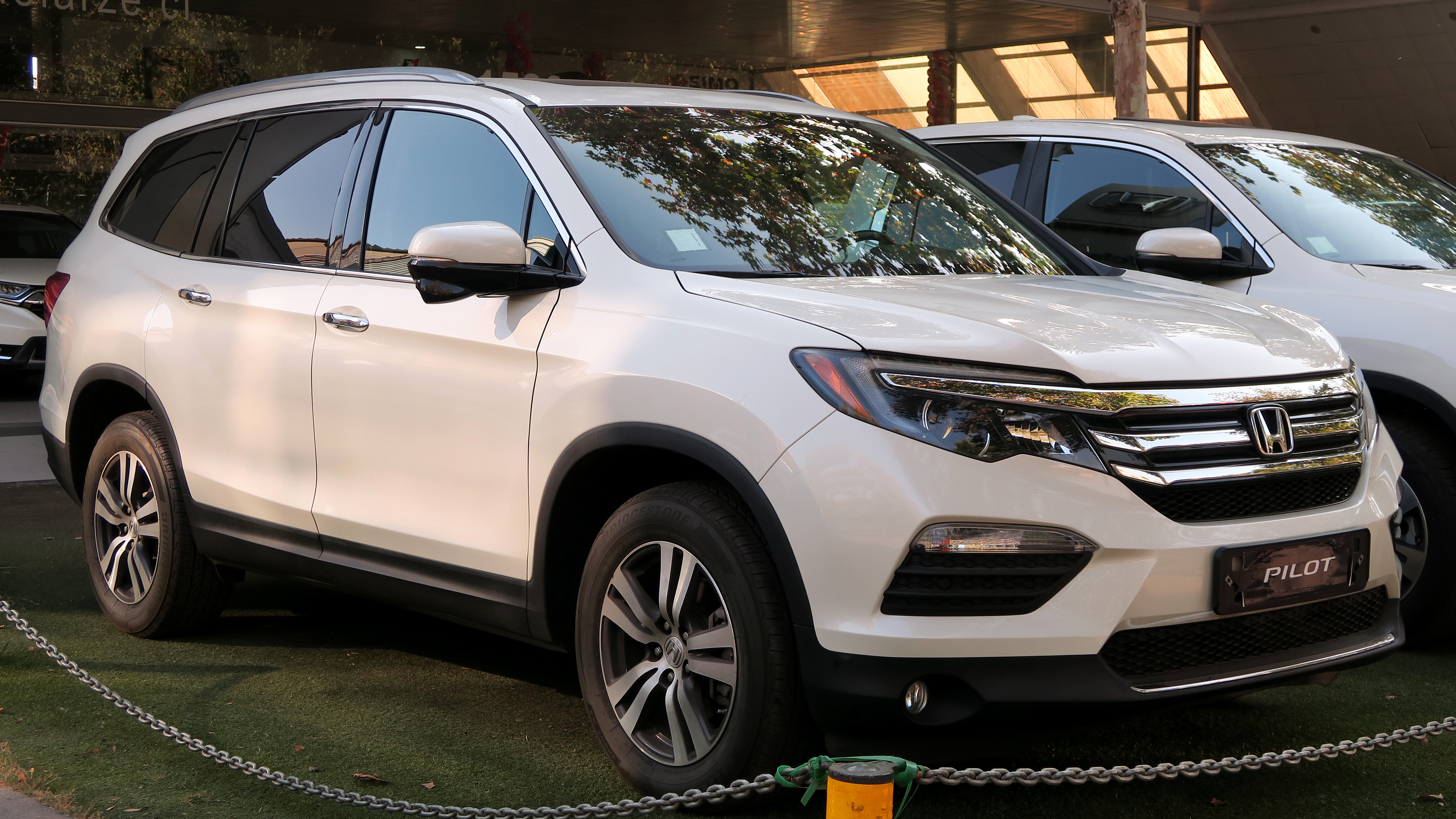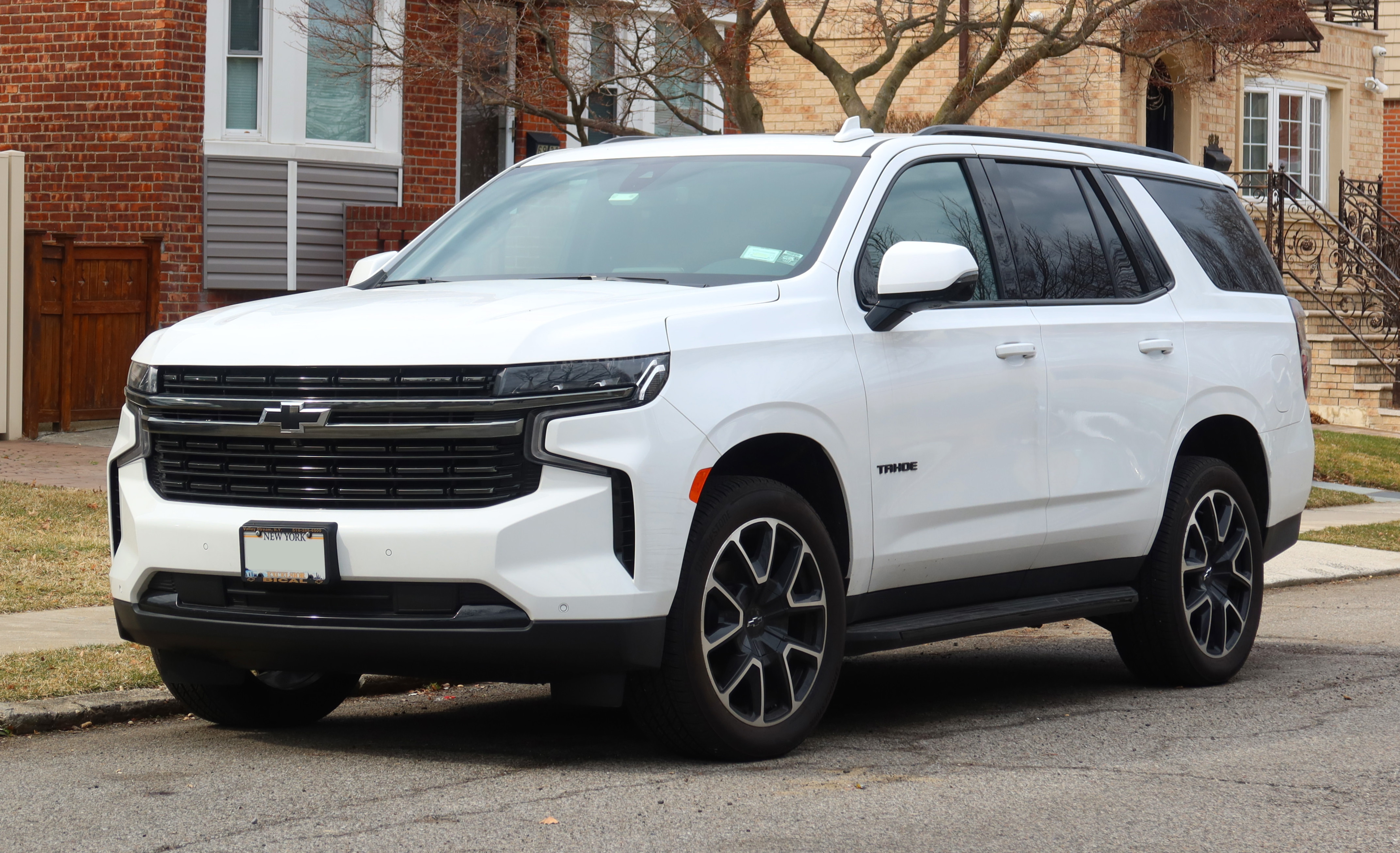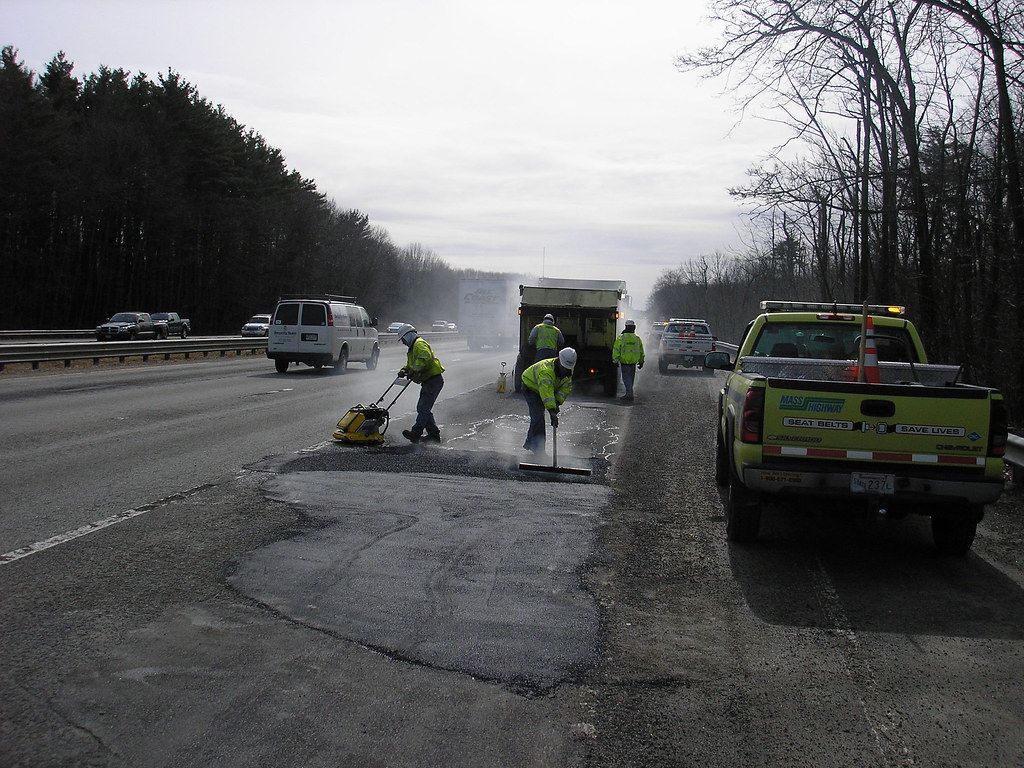
In an era where vehicle safety is paramount, organizations like the Insurance Institute for Highway Safety (IIHS) play a critical role in providing consumers with objective, data-driven insights into how vehicles perform in various crash scenarios. These independent evaluations are not just technical reports; they are vital tools that empower car buyers to make informed decisions, ensuring the vehicles they choose offer the best possible protection for themselves and their loved ones. Our focus today turns to a particularly challenging, yet increasingly important, assessment: the passenger-side small overlap front crash test.
Automakers have made remarkable progress in enhancing vehicle safety over the past decade, especially following the IIHS’s introduction of the driver-side small overlap crash test in 2012. This test simulates a common and severe collision type, where just the front corner of a vehicle strikes another vehicle or an object like a tree or utility pole. However, the protection offered to passengers hasn’t always kept pace with advancements made for drivers. Recognizing this disparity, the IIHS began rating vehicles in the passenger-side small overlap test, revealing that while many models offer robust protection, others still exhibit serious deficiencies in their airbags, safety belts, and fundamental structure.
This in-depth article will meticulously explore several models that have demonstrated concerning performance in these critical passenger-side evaluations. We will delve into the specific issues identified by IIHS researchers, from significant structural compromises to alarming failures in occupant restraint systems. Understanding these findings is crucial for consumers, as the data reveals potential injury risks to a front-seat passenger in a right-side small overlap front crash, often affecting the head, hip, or leg. Join us as we uncover the detailed findings from these rigorous tests, equipping you with the knowledge needed to prioritize safety in your next vehicle purchase.

1. **Ford Explorer (2018 Model Year)**The 2018 Ford Explorer received a ‘poor’ rating in the IIHS passenger-side small overlap front crash test, a designation that immediately signals significant safety concerns for occupants. The primary reason for this alarming assessment was the severe compromise to the vehicle’s fundamental structure. In such a crash, the integrity of the vehicle’s frame is paramount, as it dictates the survival space available to occupants. For the Explorer, this vital structural protection was found to be seriously lacking, indicating a substantial risk in real-world scenarios.
Specific measurements taken during the test painted a stark picture of the intrusion. At the lower door hinge pillar, intrusion reached a substantial 15 inches, while at the upper door hinge pillar and the dashboard, it extended 13 inches. Compounding these issues, the door sill was pushed inward by 6 inches towards the dummy, further diminishing the critical space needed for passenger survival. Such extensive intrusion highlights how the vehicle’s structure failed to adequately absorb and deflect crash forces, directly impacting the safety cage around the passenger.
The implications of this structural collapse were directly reflected in the data gathered from the passenger dummy. Measures from the dummy indicated a high likelihood of injuries to the right hip in a real-world crash of comparable severity. Furthermore, there was also a possibility of left lower leg injuries, emphasizing that multiple areas of the passenger’s body were at significant risk due to the compromised vehicle structure. These findings underscore the direct link between structural integrity and occupant injury prevention.
It is also noteworthy that the Explorer had previously shown poor structural performance in the driver-side test, earning an overall rating of marginal for driver-side small overlap protection. This pattern suggests a systemic issue with small overlap protection on both sides of the vehicle in that model year. Ford has since announced plans to redesign the Explorer, stating that the new model will feature improved small overlap protection on both sides. This commitment from the manufacturer is a positive step, acknowledging the critical need for enhanced safety in this challenging crash mode.

2. **Jeep Grand Cherokee (2018 Model Year)**The 2018 Jeep Grand Cherokee’s performance in the passenger-side small overlap test revealed a troubling combination of structural and restraint system failures, posing serious risks to the front passenger. While the maximum intrusion at the lower door hinge pillar was recorded at 10 inches – less than the Explorer but still significant – it was the sequence of events involving the occupant restraint systems that proved particularly alarming. This test highlighted how interdependent safety features must work flawlessly to protect occupants.
Perhaps the most disturbing finding concerned the passenger dummy’s head interaction during the crash. The dummy’s head struck the dashboard hard, despite the presence of the front airbag. This indicates that the front airbag either did not deploy optimally, or its coverage and cushioning were insufficient to prevent forceful contact with the rigid interior structures. Such an impact carries a high risk of head injuries, which are among the most serious consequences in any collision.
Further compounding the safety deficiencies, the side curtain airbag, a crucial component for protecting occupants from side impacts and preventing ejection, failed to deploy during the test. Simultaneously, the vehicle door opened, a dangerous occurrence that can lead to partial or full ejection of the occupant. The combination of the head striking the dashboard, the side curtain airbag failing to deploy, and the door opening resulted in the passenger dummy’s head moving outside the vehicle during rebound. This scenario is profoundly concerning, as ejection or even partial ejection dramatically increases the severity of potential injuries.
The data collected from the passenger dummy corroborated these visual observations, indicating a high likelihood of right leg injuries in a crash of this severity. Moreover, a head injury was listed as a possible outcome, reinforcing the dangers observed during the dummy’s interaction with the dashboard and its subsequent movement outside the vehicle. These findings collectively paint a picture of significant vulnerabilities in the Grand Cherokee’s passenger-side protection, where multiple safety systems did not perform as expected.
For consumers, these details are vital because they illustrate that even a vehicle perceived as robust can have critical flaws in specific crash scenarios. The failure of airbags and the opening of a door are not minor issues; they are fundamental breakdowns in a vehicle’s ability to protect its occupants. The Grand Cherokee’s performance in this test serves as a stark reminder of the complex interplay of structural integrity and restraint system efficacy required to ensure comprehensive passenger safety.
Car Model Information: 2021 Honda Accord EX-L 1.5T
Name: Jeep Grand Cherokee
Manufacturer: Jeep
Production: 1992–present
ModelYears: 1993–present
Class: unbulleted list
BodyStyle: sport utility vehicle
Layout: unbulleted list
Chassis: Vehicle_frame#Uniframe
Categories: 2000s cars, 2010s cars, 2020s cars, All-wheel-drive vehicles, All Wikipedia articles written in American English
Summary: The Jeep Grand Cherokee is a range of mid-sized sport utility vehicles produced by American manufacturer Jeep. At its introduction, while most SUVs were still manufactured with body-on-frame construction, the Grand Cherokee has used a unibody chassis from the start.
Get more information about: Jeep Grand Cherokee
Buying a high-performing used car >>>
Brand: Jeep Model: Grand Cherokee
Price: $19,900 Mileage: 81,000 mi.

3. **Honda Pilot (2018 Model Year)**While the 2018 Honda Pilot managed to secure an overall ‘acceptable’ rating in the passenger-side small overlap front crash test, a closer look at the detailed results reveals a specific, and concerning, area of poor performance: the possibility of head injuries for the passenger. This outcome highlights that an ‘acceptable’ overall rating does not always translate to flawless protection across all critical safety metrics. For consumers, understanding these nuances is essential for a complete safety assessment.
The primary issue identified was the interaction between the passenger dummy’s head and the vehicle’s interior. During the simulated crash, the dummy’s head slid off the front airbag. This meant that the airbag, intended to cushion the head and prevent impact with hard surfaces, failed to keep the head properly contained. Consequently, the head moved far enough forward to strike the dashboard hard, a direct and forceful impact that carries a substantial risk of head trauma.
Even with ‘good’ structural performance, which contributed to the Pilot’s overall acceptable rating, the failure of the front airbag to adequately manage head kinematics is a significant concern. The purpose of an airbag is to work in conjunction with the seatbelt to decelerate the occupant’s head and torso in a controlled manner, preventing contact with the vehicle’s interior. When the head slides off the airbag and impacts the dashboard, that critical protective function is compromised, leaving the passenger vulnerable.
For potential buyers, this specific finding underscores the importance of looking beyond summary ratings. While the Pilot’s structure held up well, the design of its front airbag or its interaction with the passenger in a small overlap crash presented a clear risk of head injuries. This serves as an important reminder that even generally well-performing vehicles can have specific weaknesses that could have serious consequences for occupants in certain types of collisions. It’s crucial for automakers to ensure comprehensive, multi-faceted protection, addressing every potential injury mechanism, even when overall structural integrity is maintained. The risk of head injury is simply too great to overlook.
Car Model Information: 2014 Honda Pilot EX-L
Name: Honda Pilot
Caption: 2023 Honda Pilot Touring (US)
Manufacturer: Honda
Production: 2002–present
ModelYears: 2003–present
Class: Mid-size crossover SUV
BodyStyle: SUV
Layout: unbulleted list
Categories: 2010s cars, 2020s cars, All-wheel-drive vehicles, All Wikipedia articles written in American English, All articles containing potentially dated statements
Summary: The Honda Pilot is a mid-size crossover SUV with three-row seating manufactured by Honda since 2002 for the 2003 model year. Primarily aimed at the North American market, the Pilot is the largest SUV produced by Honda. As of 2025, the Pilot is manufactured in Lincoln, Alabama, and the Pilot was produced in Alliston, Ontario until April 2007. The first generation Pilot was released in April 2002 as a 2003 model.
The Pilot shares its platform with the Acura MDX, as well as the North American market Odyssey minivan. The Pilot’s unibody construction and independent suspension are designed to provide handling similar to that of a car, and it has integrated perimeter frame rails to permit towing and light off-road use.
Prior to the introduction of the Pilot, Honda marketed the compact crossover CR-V, the midsize Passport (rebadged Isuzu Rodeo) fullsize Crossroad (rebadged Land Rover Discovery series 1) and Acura SLX (rebadged Isuzu Trooper). Unlike the Passport, Crossroad and SLX which were truck-based body-on-frame designs, the Pilot shared a unibody construction layout akin to the smaller Civic-based CR-V. The Pilot is Honda’s largest SUV, although the 2010 Crosstour surpassed the Pilot in length.
The Pilot is sold in North America and the Middle East, while the Honda MDX (first generation Acura MDX) was marketed in Japan and Australia for several years. The second-generation Pilot was also sold in Russia, Ukraine, South Korea, Latin America, and the Philippines.
Get more information about: Honda Pilot
Buying a high-performing used car >>>
Brand: Honda Model: Pilot
Price: $12,645 Mileage: 139,975 mi.

4. **GMC Acadia (2018 Model Year)**While some vehicles struggled significantly in the passenger-side small overlap front crash test, others demonstrated a more nuanced performance, offering a generally good level of protection but with specific points of concern. The 2018 GMC Acadia falls into this category, having earned a commendable ‘good’ rating from the IIHS for its passenger-side small overlap front protection. This achievement places it among the top performers in its segment for this particular test, suggesting a strong foundational safety design that benefits its occupants.
A key factor contributing to the Acadia’s ‘good’ rating was its robust structural performance. The vehicle exhibited impressive integrity, with maximum intrusion measuring a mere 2 inches on the right side of the toepan. This minimal intrusion is critical, as it signifies that the passenger’s survival space was largely maintained, preventing severe crushing or impingement that could lead to serious injuries. The ability of a vehicle’s structure to resist deformation in a small overlap crash is a primary indicator of its overall crashworthiness and its capacity to protect occupants effectively, and the Acadia demonstrated this well.
However, even a ‘good’ rating does not always imply perfection, and the Acadia’s performance was not without its specific shortcomings. IIHS researchers noted a particular issue involving the passenger dummy’s head. During the simulated collision, the dummy’s head slid off the right side of the front airbag. This unexpected movement left the head vulnerable to potential contact with the vehicle’s forward structure, highlighting a subtle but significant deficiency in the restraint system’s ability to fully cradle and protect the occupant’s head as intended.
This specific finding underscores the importance for consumers to delve beyond summary ratings and understand the detailed nuances of crash test reports. While the Acadia’s structural performance was exemplary in maintaining survival space, the interaction with the airbag system presented a potential, albeit manageable, risk of head injury. It serves as a clear illustration of the IIHS’s thorough approach, which meticulously scrutinizes every facet of occupant protection to identify even minor vulnerabilities that could have real-world consequences.
Therefore, for buyers prioritizing safety, the Acadia represents a strong choice overall, but with a caveat. Its good structural integrity provides a solid foundation, yet the identified airbag interaction issue suggests that automakers continually need to refine and optimize restraint systems for comprehensive protection in all crash modes. This ongoing pursuit of perfection by organizations like IIHS helps drive manufacturers to engineer even safer vehicles for the benefit of all road users.
Car Model Information: 2017 GMC Acadia Limited Limited
Name: GMC Acadia
Manufacturer: General Motors
Aka: Holden Acadia (2018–2020)
Production: 2006–present
ModelYears: 2007–present
Class: Full-size crossover SUV
BodyStyle: sport utility vehicle
Layout: ubl
Predecessor: GMC Envoy XL,GMC Safari,Isuzu Ascender
Caption: 2024 GMC Acadia Denali in Downpour (Blue) Metallic
Categories: 2010s cars, All-wheel-drive vehicles, All Wikipedia articles written in American English, All articles with bare URLs for citations, All articles with unsourced statements
Summary: The GMC Acadia is a crossover SUV manufactured by General Motors for its GMC division. The first-generation GMC Acadia shared the GM Lambda platform with the Saturn Outlook, the Chevrolet Traverse, and the Buick Enclave. The Acadia went on sale in 2006 as a 2007 model in the United States, Canada and Mexico. The Acadia replaces three of the 7- or 8-seater vehicles on the Buick-Pontiac–GMC dealership network, the midsize GMC Safari van, the GMC Envoy, and the Pontiac Montana SV6 minivan for the domestic market. As of 2009, the Lambda vehicles had replaced the Buick Rainier, Buick Rendezvous, Buick Terraza, and the GMC Envoy XL and then subsequently the GMC Envoy, Chevrolet TrailBlazer and the Isuzu Ascender. A Denali version of the Acadia debuted for 2011. In 2017, the second generation Acadia was repositioned as a mid-size crossover utility vehicle in order to compete in the growing midsize SUV market against the likes of the Ford Explorer, Edge, and the Jeep Grand Cherokee.
Get more information about: GMC Acadia
Buying a high-performing used car >>>
Brand: GMC Model: Acadia
Price: $18,250 Mileage: 58,995 mi.

5. **Chevrolet Tahoe (Recent Model Years)**Moving to more recent evaluations, the Insurance Institute for Highway Safety continued its rigorous testing of popular large SUVs, and the results for some well-known models proved to be less encouraging. The Chevrolet Tahoe, a prominent figure in the full-size SUV segment, unfortunately fell short in the latest IIHS small overlap front crash tests. This outcome, alongside the Ford Expedition, indicates that despite general advancements in vehicle safety, specific challenges persist, especially in demanding crash scenarios like the small overlap test.
A notable disparity in the Tahoe’s performance was observed between the driver-side and passenger-side evaluations. While the vehicle managed to maintain adequate survival space for the driver in the event of a crash, it presented more intrusion into the footwell on the driver’s side. This intrusion alone was significant enough to cause a substantial risk of lower leg injuries to the driver. Alarmingly, the performance was even worse in the passenger-side test, suggesting an uneven distribution of protective measures within the vehicle’s design.
Specifically, for the front passenger, the small overlap test revealed concerning vulnerabilities. Excessive intrusion into the footwell on the passenger side contributed directly to a high risk of injury to the right foot. Furthermore, there was a moderate risk of injury to the left leg of the passenger. These findings highlight a critical failure in the vehicle’s structure and restraint systems to adequately manage crash forces and preserve occupant space in this specific type of collision, leaving the passenger vulnerable to significant lower extremity trauma.
It is worth noting that while the Tahoe struggled in the small overlap front test, it did receive a ‘good’ rating in the original ‘moderate overlap front’ evaluation. This distinction is crucial, as the moderate overlap test involves a larger portion of the vehicle’s front striking a barrier and primarily considers the protection for front-seat occupants. However, the small overlap test is designed to probe weaknesses in a different, often more challenging, crash mode where the vehicle’s main crush structures may be bypassed, revealing vulnerabilities that were not apparent in less severe tests. The Tahoe’s contrasting performance underscores the importance of excelling in all crash scenarios.
Car Model Information: 2022 Chevrolet Tahoe 4WD High Country
Name: Chevrolet Tahoe,GMC Yukon
Manufacturer: General Motors
Production: 1991–present (Yukon),1994–present (Tahoe)
Class: Full-size SUV
Related: Cadillac Escalade,Chevrolet Suburban,Chevrolet Silverado,Hummer H2
Layout: Front-engine, rear-wheel-drive layout
Predecessor: Chevrolet K5 Blazer
Caption: 2022 Chevrolet Tahoe RST (fifth generation)
Categories: 2000s cars, 2010s cars, 2020s cars, All-wheel-drive vehicles, All articles with unsourced statements
Summary: The Chevrolet Tahoe () is a line of full-size SUVs from Chevrolet marketed since the 1995 model year. Marketed alongside the GMC Yukon for its entire production, the Tahoe is the successor of the Chevrolet K5 Blazer; the Yukon has replaced the full-sized GMC Jimmy. Both trucks derive their nameplates from western North America, with Chevrolet referring to Lake Tahoe; GMC, the Canadian Yukon.
Initially produced as a three-door SUV wagon, a five-door wagon body was introduced for 1995, ultimately replacing the three-door body entirely. The five-door wagon shares its body with the Chevrolet and GMC Suburban (today, GMC Yukon XL) as a shorter-wheelbase variant. Since 1998, the Tahoe has served as the basis of the standard-wheelbase GMC Yukon Denali and Cadillac Escalade luxury SUVs. The Tahoe is sold in North America, parts of Asia such as the Philippines, and the Middle East, plus other countries including Bolivia, Chile, Peru, Colombia, Ecuador, and Angola as a left-hand-drive vehicle. The Yukon is only sold in North America and the Middle East.
The Tahoe has regularly been the best-selling full-size SUV in the United States, frequently outselling its competition by two to one.
Get more information about: Chevrolet Tahoe
Buying a high-performing used car >>>
Brand: Chevrolet Model: Tahoe
Price: $63,016 Mileage: 39,491 mi.

6. **Ford Expedition (Recent Model Years)**Among the recent evaluations by the IIHS of large SUVs, the Ford Expedition presented the most concerning results, performing the worst out of the three models tested (Wagoneer, Tahoe, Expedition) in the small overlap front crash test. This ‘poor’ performance indicates significant safety deficiencies that place occupants at a high risk of injury in this common yet severe type of collision, emphasizing a clear area for improvement in its protective capabilities.
The Expedition’s driver-side small overlap test revealed a series of alarming structural failures. The steering column partially detached from the instrument panel, an event that can dramatically increase the risk of injury to the driver due to uncontrolled movement of critical components. Compounding this, the A-pillar separated from the rocker panel, signifying a major compromise to the structural integrity of the passenger compartment. Excessive intrusion into the driver-side footwell further underscored these issues, directly correlating to a high risk of injury to the driver’s lower extremities.
While the driver’s side exhibited profound structural compromise, the passenger side of the Expedition also showed concerning performance, though the footwell intrusion was to a lesser extent than observed on the driver side. Even reduced intrusion still poses a significant threat, highlighting that protective measures were not consistently adequate across the front of the vehicle in this challenging crash scenario. Such asymmetry in protection is a recurring theme in small overlap testing and points to areas where automakers can enhance overall safety design.
Furthermore, the Expedition’s performance was marred by crucial airbag failures. The driver’s side curtain airbag, a vital component designed to protect the head in side impacts and prevent ejection, failed to deploy during the test. Equally concerning, the side curtain airbag for rear passengers also failed to deploy. While the IIHS noted that this rear airbag failure was not enough to change the SUV’s overall safety rating in this specific test, it points to a broader systemic issue with airbag deployment reliability within the vehicle’s design, raising questions about comprehensive occupant protection in various crash types.
These findings paint a stark picture of the Ford Expedition’s vulnerabilities in small overlap crashes. Despite receiving a ‘good’ rating in the less demanding ‘moderate overlap front’ evaluation, the severe structural breaches, significant intrusion, and critical airbag non-deployments in the small overlap tests indicate a need for substantial redesign and reinforcement. Consumers considering this model must weigh these detailed safety reports carefully, understanding that a vehicle’s overall safety relies on its performance across a full spectrum of real-world crash conditions, not just select scenarios.
Car Model Information: 2019 Ford Expedition Max Limited
Name: Ford Expedition
Manufacturer: Ford Motor Company
Production: 1996–present
ModelYears: 1997–present
Class: Full-size car,Sport utility vehicle
Related: Lincoln Navigator
BodyStyle: Sport utility vehicle
Layout: Front-engine, rear-wheel-drive layout,Front-engine, four-wheel-drive layout
Chassis: Body-on-frame
Predecessor: Ford Bronco,Ford Excursion
Categories: 2000s cars, 2010s cars, 2020s cars, All-wheel-drive vehicles, All Wikipedia articles written in American English
Summary: The Ford Expedition is a full-size SUV produced by Ford Motor Company since the 1997 model year. The successor to the Ford Bronco, the Expedition shifted its form factor from an off-road oriented vehicle to a truck-based station wagon. Initially competing against the Chevrolet Tahoe, the Expedition also competes against the Toyota Sequoia, Nissan Armada, and the Jeep Wagoneer.
First used for a 1992 F-150 concept vehicle, Ford first marketed the Expedition nameplate for 1995 on a trim level package for the two-door Ford Explorer Sport. As with its Bronco predecessor, the Expedition is heavily derives its chassis from the Ford F-150, differing primarily in suspension configuration. All five generations of the Expedition have served as the basis of the Lincoln Navigator–the first full-size luxury SUV. The model line is produced in two wheelbases (an extended-wheelbase variant introduced was introduced for 2007, largely replacing the Ford Excursion), with seating for up to eight passengers.
Ford currently assembles the Expedition at its Kentucky Truck Assembly facility (Louisville, Kentucky) alongside the Lincoln Navigator and Super Duty trucks. Prior to 2009, the model line was assembled by the Michigan Assembly Plant (Wayne, Michigan).
Get more information about: Ford Expedition
Buying a high-performing used car >>>
Brand: Ford Model: Expedition
Price: $28,885 Mileage: 82,142 mi.
The detailed examination of these midsize and large SUVs in the IIHS passenger-side small overlap front crash test underscores a crucial truth in automotive safety: progress is continuous, and vigilance remains paramount. From the concerning structural compromises in the Ford Explorer and the multi-faceted failures in the Jeep Grand Cherokee, to the specific airbag interaction issue in the Honda Pilot, and the more recent challenges faced by the Chevrolet Tahoe and Ford Expedition, these evaluations provide invaluable insights. Even vehicles that achieve generally ‘good’ ratings, like the GMC Acadia, can reveal specific areas requiring attention, such as airbag performance. The IIHS’s commitment to regularly updating its testing criteria ensures that automakers are continually pushed to achieve higher levels of vehicle safety, moving beyond minimum compliance to prioritize comprehensive occupant protection in an ever-evolving crash landscape. For consumers, this meticulous, independent testing empowers informed decision-making, emphasizing that a deep dive into crash test reports is essential for understanding the true protective capabilities of a vehicle, ensuring that safety remains the ultimate priority on our roads.



